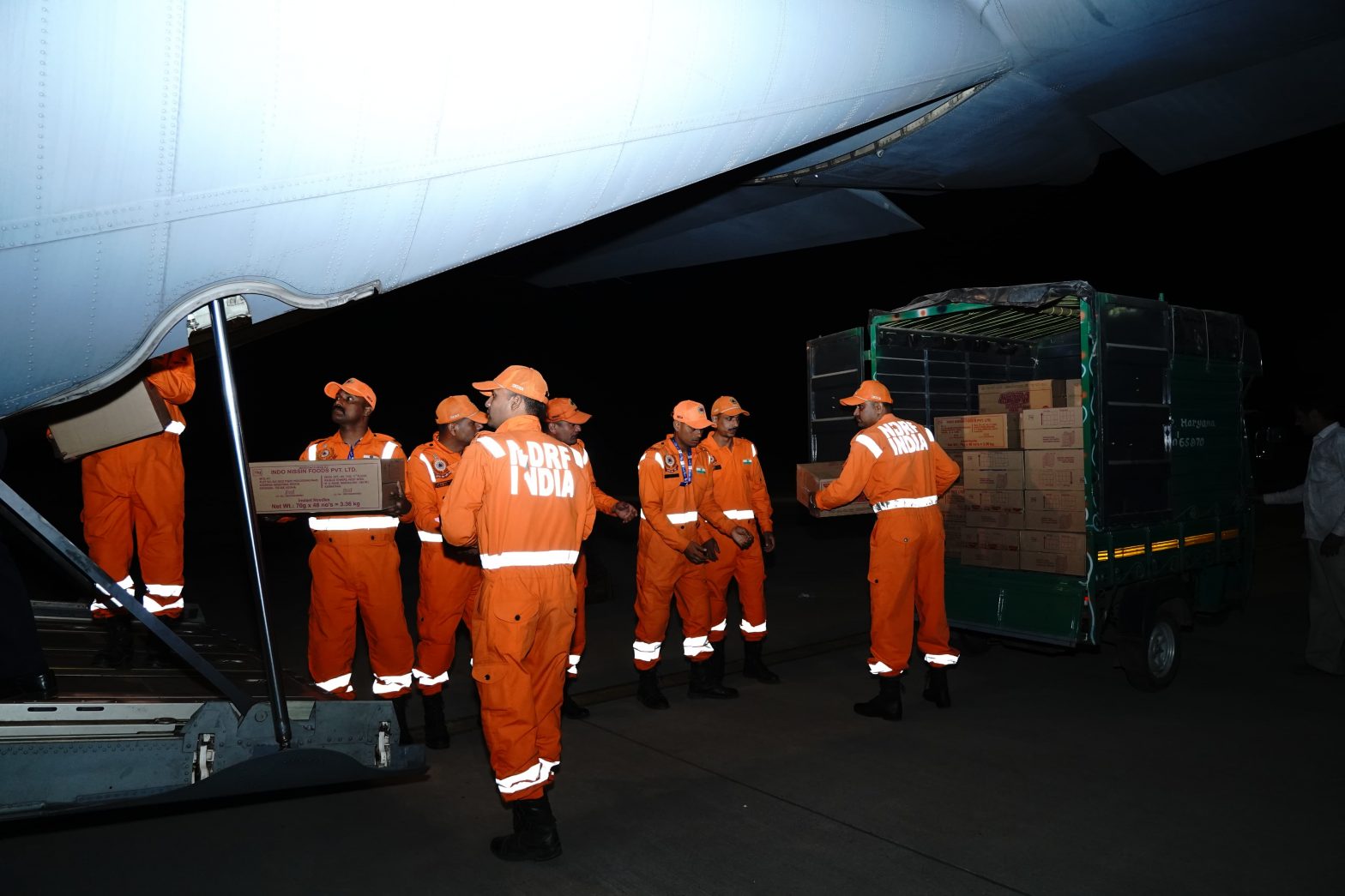
New Delhi: In response to a series of powerful earthquakes that have resulted in over 144 fatalities and 700 injuries in Myanmar, India is dispatching more than 15 tonnes of relief supplies. An Indian Air Force (IAF) C-130J aircraft will deliver the aid from Air Force Station Hindon.
The relief materials include tents, sleeping bags, blankets, ready-to-eat meals, water purifiers, hygiene kits, solar lamps, generator sets, and essential medicines such as paracetamol, antibiotics, syringes, gloves, and bandages.
The Indian Embassy is actively monitoring the situation and reports no Indian casualties thus far. “Following powerful tremors felt in Bangkok and other locations in Thailand, the embassy is coordinating with Thai authorities. No incidents involving Indian citizens have been reported. In emergencies, Indians in Thailand are advised to contact the emergency number +66 618819218. All embassy personnel in Bangkok and the consulate in Chiang Mai are safe,” stated a post on X.
Prime Minister Narendra Modi expressed India’s readiness to assist Myanmar after the significant earthquake, stating, “Concerned by the situation in the wake of the Earthquake in Myanmar and Thailand.”
Authorities in India and Bangladesh have reported no significant impact from the 7.7-magnitude quake that struck Myanmar. The series of tremors, including a 7.2-magnitude earthquake, caused structural damage and panic in both Myanmar and neighboring Thailand.
The latest earthquake, measuring 4.2 on the Richter Scale, was recorded in Myanmar at 11:56 p.m. (local time) on March 28, at a depth of 10 km, raising concerns about possible aftershocks.
Earlier that day, a major quake measuring 7.2 struck at 11:50 a.m. (local time), with reports indicating that people evacuated buildings in Bangkok due to the tremor. Eyewitness accounts and social media videos showed water splashing from swimming pools as a result of the quake’s strength.
This earthquake at 11:50 a.m. IST was immediately followed by a 6.4-magnitude aftershock, and the National Center for Seismology reported a 4.9-magnitude quake as the third aftershock, following the initial tremor.
Concerns arose after a 30-story skyscraper under construction in the Chatuchak district collapsed due to the quake. Footage from Myanmar showed a road bridge over the Irrawaddy River collapsing into the water amid a cloud of dust.
Myanmar experienced six earthquakes on March 28, according to the National Center for Seismology. Although the country is prone to earthquakes due to the convergence of the Eurasian and Indo-Australian tectonic plates, it has yet to establish an official seismic hazard map. Data from the International Seismological Centre indicates that Myanmar and its vicinity experienced nearly 140 earthquakes of magnitude 3.0 or greater annually from 1990 to 2019, underscoring the region’s vulnerability to significant seismic activity, as well as potential tsunami threats along its extensive coastline.
